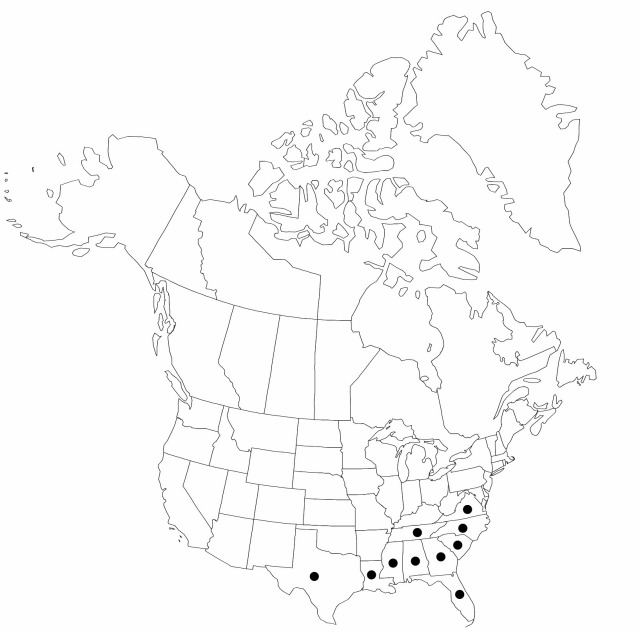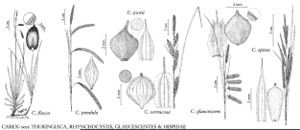Carex glaucescens
Sketch Bot. S. Carolina 2: 553. 1824.
Culms to 120 cm. Leaves: sheaths glaucous, fronts strongly veined, veins persisting as a pinnate network, apex thickened, truncate or distal sheaths concave; blades 40–75 cm × 4–8 mm, strongly scabrous on margins and adaxial surface. Inflorescences with 5–7 spikes, 20 cm; peduncle of lateral spikes to 5 cm; proximal bracts equaling inflorescences, 2–4 mm wide; lateral spikes with staminate spikelets at apex, pendent, 3–6 cm × 6–9 mm. Pistillate scales shorter and narrower than perigynia, apex retuse, awn to 3.5 mm. Perigynia ascending, redbrown, angles veined, faces veinless or indistinctly 3–4-veined, sessile, elliptic, 3.2–5 × 1.8–2.6 mm, base rounded, apex obtuse to tapered, densely papillose with minute translucent papillae giving grayish color, glaucous; beak 0.2–0.5 mm, often minutely bidentate, slightly thickened, teeth to 0.1 mm. Achenes ellipsoid, 2.5–3 × 1.5–2 mm, base not conspicuously broadened.
Phenology: Fruiting Jul–Aug.
Habitat: Stream or pond margins, seepage bogs, swamps, wet meadows, ditches, usually in sandy soils and seasonally wet areas
Elevation: 0–800 m
Distribution

Ala., Fla., Ga., La., Miss., N.C., S.C., Tenn., Tex., Va.
Discussion
Grazed or severely disturbed plants of Carex glaucescens sometimes flower in August or later; these plants have condensed inflorescences and androgynous terminal spikes.
Selected References
None.
Lower Taxa
"shortened" is not a number."shorter and narrower" is not a number.
